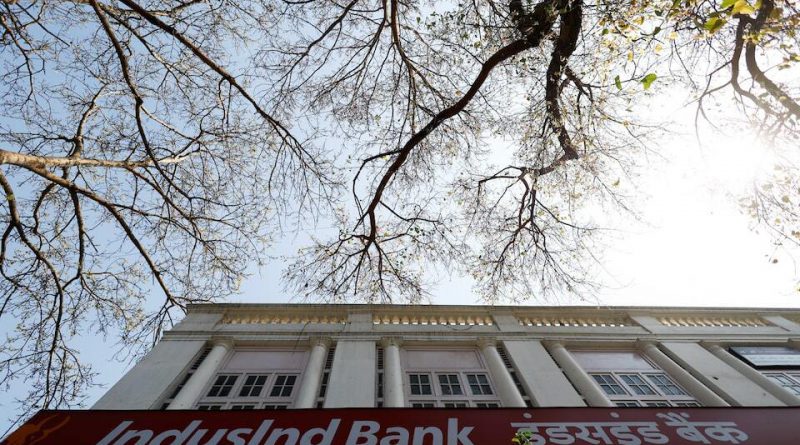IndusInd Bank Reports Quarterly Loss Amid Leadership Transition
Mumbai — Private sector lender IndusInd Bank Ltd reported a net loss for the second quarter ended September 2025, marking its first earnings report under newly appointed Chief Executive Officer Rajiv Anand.
The results reflect the bank’s ongoing efforts to strengthen its balance sheet through higher provisions for potential bad loans while undertaking a strategic review to stabilize operations after a management overhaul earlier this year.
The Mumbai-based lender posted a standalone net loss of ₹4.36 billion ($49.56 million) for the July–September quarter, compared with a net profit of ₹13.31 billion during the same period last year.
Analysts surveyed by LSEG had expected the bank to post a profit of around ₹6.37 billion, making the loss wider than anticipated.
The setback follows a turbulent year for IndusInd Bank, which faced scrutiny after internal governance and accounting lapses came to light. The issues led to the departure of former CEO Sumant Kathpalia and deputy Arun Khurana, prompting the appointment of veteran banker Rajiv Anand in late August to restore investor confidence and operational stability.
Accounting Adjustments and Provisions
According to Anand, all financial discrepancies identified earlier in the year have been fully accounted for in the books. “The financial impact of the discrepancies has been completely recognized, and we are now focusing on strengthening governance and operational efficiency,” Anand said during the post-results briefing.
During the quarter, the bank significantly increased its provisions and contingencies by 44%, to ₹26.22 billion, as part of its effort to build stronger buffers against potential future loan losses.
The move reflects a cautious approach amid stress observed in certain segments of the lending market, particularly microfinance loans.
Anand explained that the bank has chosen to step up provisions for its micro-loan portfolio — an area where the broader industry has reported early signs of stress — and has written off some of these loans, which typically requires higher provisioning.
Asset Quality and Financial Indicators
Despite the loss, the bank’s asset quality remained stable, with its gross non-performing asset (NPA) ratio standing at 3.6% as of September 30, compared with 3.5% in the previous quarter.
The relatively steady asset performance indicates that the bank’s cleanup efforts and provisioning measures are starting to take effect.
However, IndusInd’s overall loan book contracted by 9% year-on-year, and deposits fell by 6%, reflecting a temporary slowdown in business growth as the bank recalibrates its strategy.
The bank’s net interest income (NII) declined 18% year-on-year to ₹44.09 billion, primarily due to a lower lending base and the impact of recent interest rate cuts by the Reserve Bank of India (RBI).
The net interest margin (NIM) — a key measure of profitability — slipped to 3.32% from 4.08% a year ago. Lower central bank rates tend to reduce short-term lending margins, as banks pass on rate cuts to borrowers faster than they adjust deposit rates.
Strategic Repositioning Underway
CEO Rajiv Anand emphasized that the bank is currently reviewing its business strategy to ensure more balanced growth and to reduce volatility in its loan portfolio. “The intent is to become more diversified, with a focus on lower-risk, stable segments such as mortgages,” he said.
IndusInd plans to expand its presence in secured lending categories such as home loans and vehicle financing, which have shown strong performance across India’s banking sector.
The bank will also conduct a detailed review of its microfinance business to assess whether the exposure should be reduced in the future.
The lender remains one of India’s leading players in the microfinance segment through its subsidiary Bharat Financial Inclusion Ltd, which holds a loan book of ₹213.21 billion. However, the portfolio saw a 35% decline year-on-year in the latest quarter, reflecting cautious lending and higher write-offs.
While the quarterly loss represents a setback, analysts say IndusInd Bank’s approach to rebuilding capital buffers and reassessing its risk strategy could strengthen its long-term fundamentals.
The leadership transition under Rajiv Anand is expected to bring a renewed focus on governance, transparency, and sustainable growth.
The bank’s management said it expects the process of assigning accountability for past lapses to conclude over the next few quarters. Meanwhile, efforts to restore profitability and rebuild market confidence remain top priorities.
IndusInd Bank’s recent challenges underscore a transitional phase for the lender, but its focus on prudent provisioning, diversification, and regulatory compliance positions it for gradual recovery as the broader Indian banking sector continues to strengthen.



